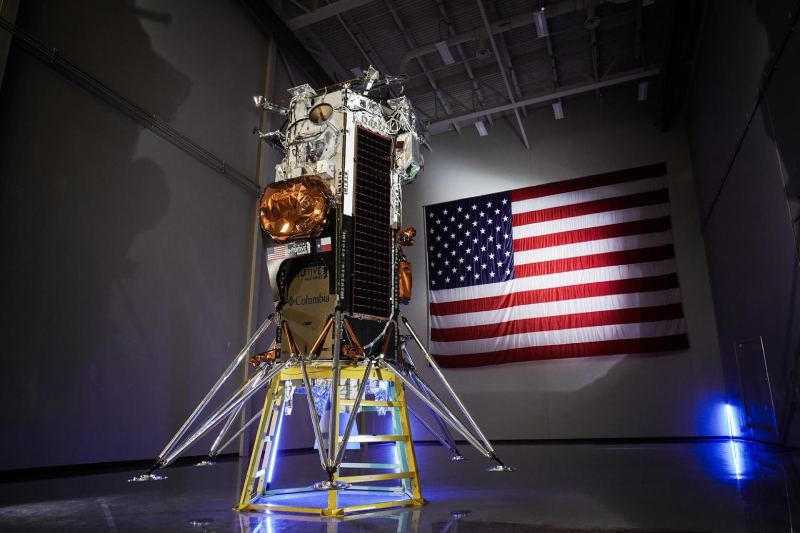
After SpaceX launches, Moon startup Intuitive Machines Embarks on its First Mission
- Technology
- February 16, 2024
The first moon mission by Texas-based Intuitive Machines got underway early on Thursday morning with the goal of perhaps making the first American lunar landing in more than 50 years.
The IM-1 mission was initiated with the launch of Intuitive Machines’ Nova-C lander from Florida onboard SpaceX’s Falcon 9 rocket.
For all of us at Intuitive Machines, it is a really humble moment. Trent Martin, vice president of space systems at Intuitive Machines, stated during a press conference that “the opportunity to return the United States to the moon for the first time since 1972 is a feat of engineering that demands a hunger to explore.”
Six of the twelve government and commercial payloads being carried by the IM-1 lander, which bears the name “Odysseus” after the Greek mythological figure, are for NASA and are part of a $118 million deal.
“IM-1 is an Intuitive Machines’ mission, it’s not a NASA mission,” NASA leadership made clear prior to launch. But it’s also the second mission under NASA’s Commercial Lunar Payload Services (CLPS) program, which intends to assist the agency’s Artemis crew program by delivering cargo and science missions to the moon on a more frequent basis.
Joel Kearns, NASA’s deputy assistant administrator for exploration in the scientific mission division, informed the media before to launch that the agency saw CLPS missions as “a learning experience.”
“Success of every landing is never assured,” Kearns said. “NASA is using CLPS to get our science investigations and technologies tests done on the moon surface and to develop a commercial community of robotic landing service providers for Artemis.”
Succeeding in landing would be the last of 16 goals that Intuitive Machines intends to accomplish with IM-1. Thus far, the launch, detachment from the rocket, and autonomous commissioning milestones have all been verified by the business as accomplished by IM-1.
Eight hours after launch, Intuitive provided an update, stating that the IM-1 spacecraft had made contact with the company’s mission control in Houston and was in a stable position with its solar-powered batteries charging.
It is anticipated that the IM-1 lander would reach the moon in roughly eight days and arrive on February 22. The “Malapert A” crater, located roughly 300 kilometers from the moon’s south pole, is the mission’s target. Odysseus will be operated by Intuitive Machines on the surface for a maximum of seven days following landing.
The share price of Intuitive Machines increased during trade after closing at $4.98 on Wednesday. It is almost half of what it was when the company’s shares had its Nasdaq debut following a SPAC merger in February 2023.
Japan made history last month by landing on the moon, joining the ranks of the United States, China, India, and Russia, which was followed by the Soviet Union.
Since the earliest attempts in the early 1960s, governments and private corporations have launched more than 50 attempts to land on the moon, with varying degrees of success. Even in the modern day, the track record has remained precarious.
The Japanese business ispace attempted a moon landing for the first time last year, but the spacecraft collapsed in the last seconds. The American company Astrobotic launched its maiden lunar mission last month, but soon after, it ran into issues. The attempt at a lunar landing was aborted, and the journey was shortened.
Kearns stated that NASA was “really happy with how open and transparent” the firm was about the mission and its learnings from it, despite the fact that Astrobotic’s most recent attempt failed.
″[Astrobotic] did a virtual meeting with all the other CLPS companies, to brief the other CLPS companies about what they found,” Kearns said.
There will be more efforts soon. NASA anticipates further missions from American companies this year, while China intends to send another lunar lander into orbit in May.